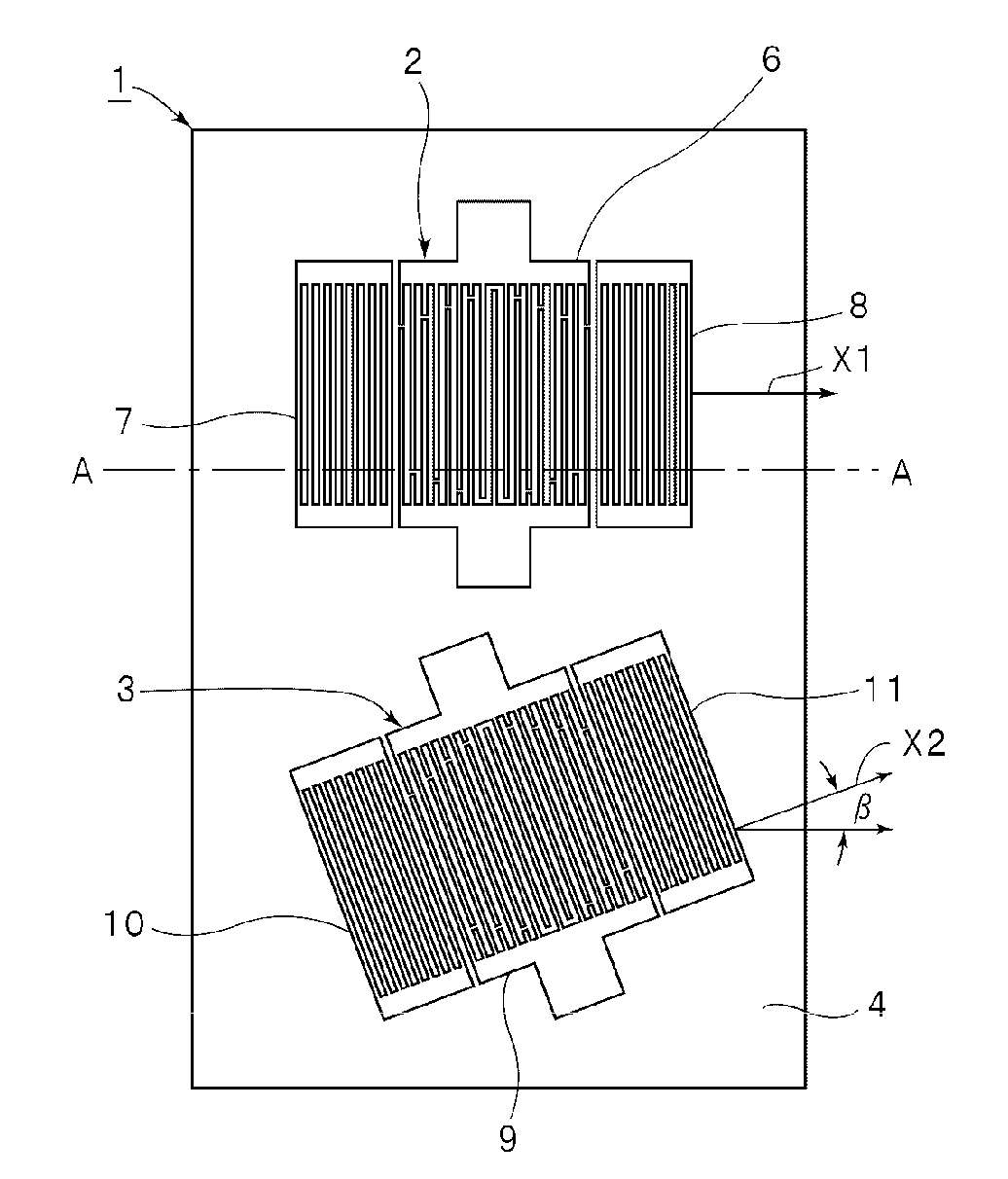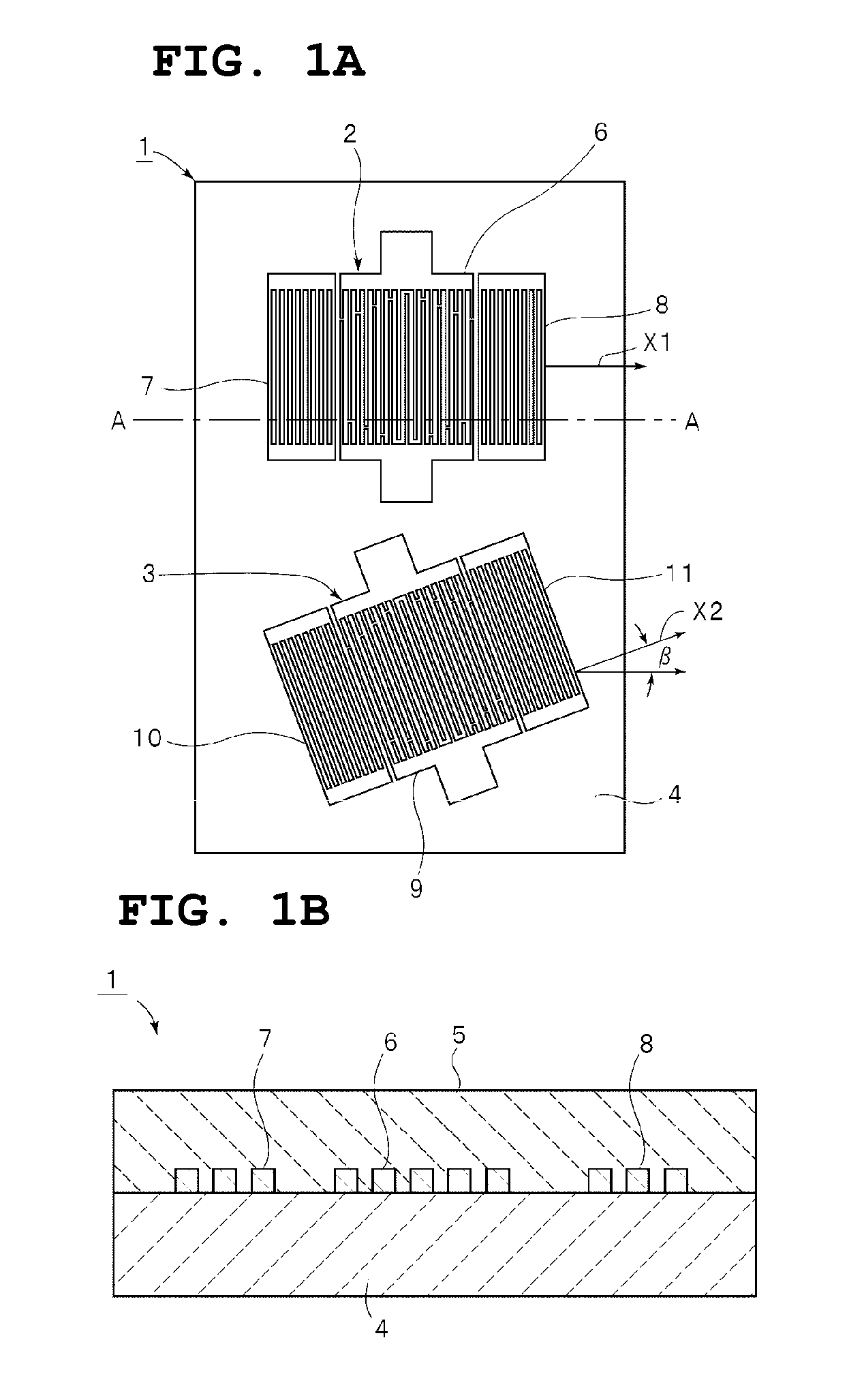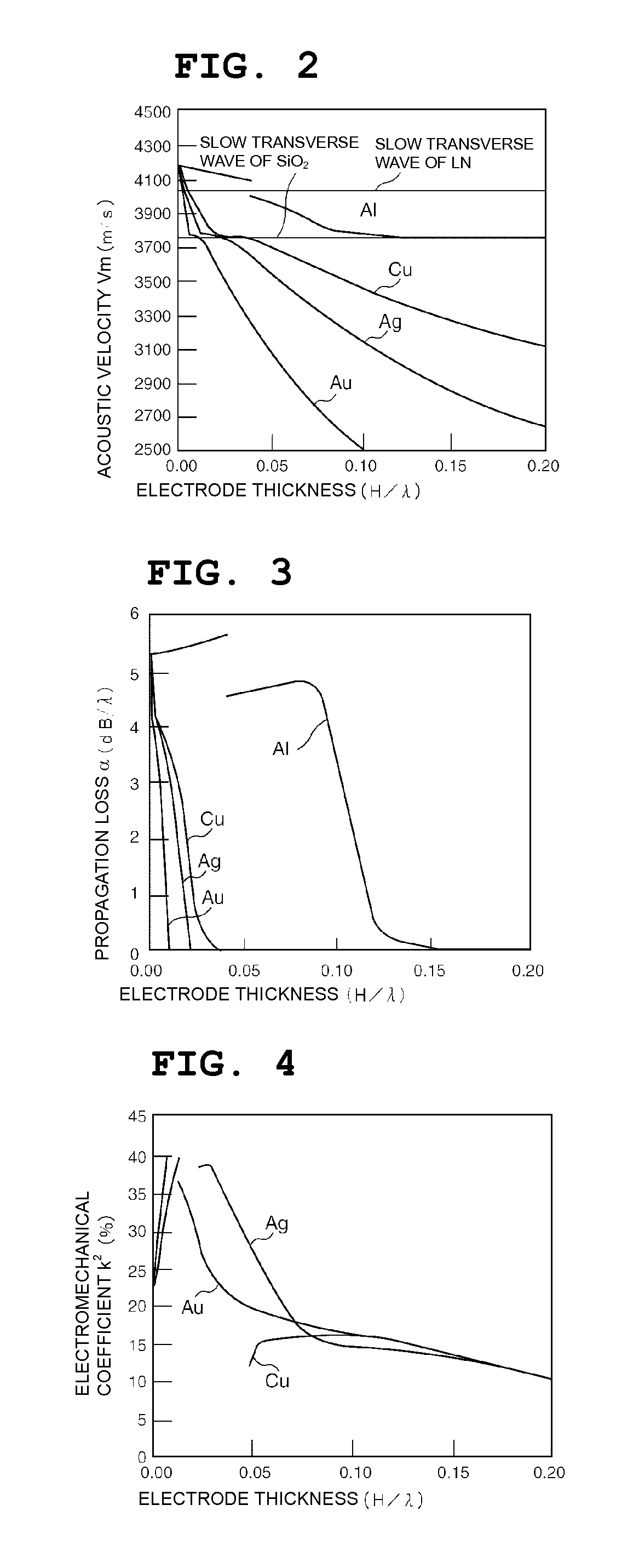Boundary acoustic wave device
a acoustic wave and device technology, applied in piezoelectric/electrostrictive devices, device material selection, piezoelectric/electrostrictive/magnetostrictive devices, etc., can solve the problems of degrading the resonant, increasing the overall size and increasing the cost of the surface acoustic wave devi
- Summary
- Abstract
- Description
- Claims
- Application Information
AI Technical Summary
Benefits of technology
Problems solved by technology
Method used
Image
Examples
experimental example 1
[0112]In the case in which electrodes were provided between a solid layer of SiO2 and a single crystal LiNbO3 substrate with Euler angles (0°, 90°, 0°) by using electrode materials having different densities, the relationships of an electrode thickness H / λ (in which H indicates the thickness, and λ indicates the wavelength of an SH type boundary acoustic wave) with the acoustic velocity, a propagation loss α, an electromechanical coefficient k2 (%), a temperature coefficient of frequency TCF (ppm / ° C.), and a power flow angle (PFA) of a boundary acoustic wave are shown in FIGS. 2 to 6, respectively.
[0113]The results shown in FIGS. 2 to 6 were obtained by calculation based on a method disclosed in “A Method For Estimating Optimal Cuts and Propagation Directions for Excitation and Propagation Directions for Excitation of Piezoelectric Surface Waves” (J. J. Campbell and W. R. Jones, IEEE Transactions on Sonics and Ultrasonics, Vol. SU-15 (1968) pp. 209 to 217).
[0114]In the case of a fr...
experimental example 2
[0128]Based on the results obtained in Experimental Example 1, electrodes of Au having a thickness of 0.05 λ were provided on a LiNbO3 substrate with Euler angles (0°, θ, 0°), and a SiO2 film was provided so as to cover the electrodes of Au. In this structure, the relationships of θ of the Euler angles of the LiNbO3 substrate with the acoustic velocities V, the electromechanical coefficients k2, the propagation losses α, the temperature coefficients of frequency TCF, and the power flow angles (PFA) of an SH type boundary acoustic wave and a Stoneley wave were measured. FIGS. 9 to 11 show the relationships of the Euler angle θ with the acoustic velocity, the electromechanical coefficient k2, and the temperature coefficient of frequency TCF. In the entire region of θ=0° to 180°, the propagation loss α was 0 dB / λ and the power flow angle (PFA) was 0°.
[0129]In FIGS. 9 to 11, U2 indicates the SH type boundary acoustic wave, and U3 indicates the Stoneley wave which causes a spurious signa...
experimental example 3
[0143]Next, electrodes of Au having a thickness of 0.06 λ were formed on respective LiNbO3 substrates with Euler angles (φ, 105°, 0°) and Euler angles (0°, 105°, ψ), and SiO2 films were formed to cover the electrodes of Au, so that boundary acoustic wave devices were provided. In this case, the relationships of the Euler angles θ and ψ of the LiNbO3 substrates with the acoustic velocities V, the electromechanical coefficients k2, the propagation losses α, the temperature coefficients of frequency TCF, and the power flow angles (PFA) of an SH type boundary acoustic wave (U2) and a Stoneley wave (U3) were measured. FIGS. 14 to 17 show the results obtained when the LiNbO3 with Euler angles (φ, 105°, 0°) was used, and FIGS. 18 to 21 show the results obtained when the LiNbO3 with Euler angles (0°, 105°, ψ) was used. In the entire region of φ of 0° to 90°, the propagation loss α is 0 dB / λ.
[0144]As apparent from FIG. 16, the electromechanical coefficient k2 of the Stoneley wave is small, s...
PUM
 Login to View More
Login to View More Abstract
Description
Claims
Application Information
 Login to View More
Login to View More - R&D
- Intellectual Property
- Life Sciences
- Materials
- Tech Scout
- Unparalleled Data Quality
- Higher Quality Content
- 60% Fewer Hallucinations
Browse by: Latest US Patents, China's latest patents, Technical Efficacy Thesaurus, Application Domain, Technology Topic, Popular Technical Reports.
© 2025 PatSnap. All rights reserved.Legal|Privacy policy|Modern Slavery Act Transparency Statement|Sitemap|About US| Contact US: help@patsnap.com



